Core Values: Suggestions for Language Building with AAC Learners

Here in the US, we celebrate the life of Dr. Martin Luther King Jr on the third Monday of January. It presents, among other things, a wonderful opportunity to talk and teach about concepts like tolerance, fairness, dignity, respect, and peaceful protest. Many of our AAC learners have a deeper understanding of these concepts than we will ever realize but they lack the language skills to discuss them in the same ways as their speaking peers do.
Today, we share some ideas for continuing the conversation about these issues to help our AAC learners continue to develop their language skills. You may already have books, videos, and other resources that are useful in teaching about the life of Dr. King and the values he fought for, but here are some previous posts with a few more suggestions.
- Martin Luther King, Jr Holiday: 5 Resources for AAC Learners
- AAC and Anti-bullying with Stand Tall Mary Lou Melon!
- PrAACtically Reading with Karen Natoci: It’s Okay to Be Different
- PrAACtically Reading with Karen Natoci: I Like Myself
How can we use these and other materials to benefit the AAC learners with whom we work? Here are a few ideas that may be of interest.
Use Core Words
Whether you are following our Year of Core Vocabulary, A(nother) Year of Core Vocabulary, or some other system to remind yourself to highlight different core words each month, there are plenty of ways we can reinforce the use of these words.
Here are some sample sentences with our January words that fit into this theme as we reflect on Dr. King’s teachings.
- He WANTed everyone to STOP treating people DIFFERENTly.
- We need MORE leaders who HELP people.
- We can all HELP make things DIFFERENT.
- WHAT is it like to feel DIFFERENT?
- It is okay THAT YOU do NOT like THAT.
Target Protesting and Rejecting
These communicative functions are critical for AAC learners to become proficient with, not just because they are part of typical language development but also because people with significant communication challenges are vulnerable. Teaching them to say ‘no’ in a clear way that is appropriate to the context and reflects their intent is a great way to build self-advocacy. You can read more about that here. Dr. King’s lessons around peaceful protesting and standing up to authority provide a wonderful context to go beyond the basics of developing this skill.
Make a Word Cloud
These are fun to make and great ways to display the words we are learning and using. You can read more about word clouds in this post. Here are some suggestions for using them:
- Choose a core or academic vocabulary word (e.g., fair, respect, tolerance) to focus on, brainstorm words that go along with that concept, and use those to populate a word cloud.
- Take the text of a speech, like this example from Dr. King’s I Have a Dream speech, and use it to create a word cloud. Explore it together and discuss why some words are larger than others. Let the AAC learner select a word they would like to know more about.

- Search for a word cloud image on a concept you are teaching, like this example for the word ‘dignity.’ Explore and discuss the words, many of which are probably already in the learner’s AAC device.
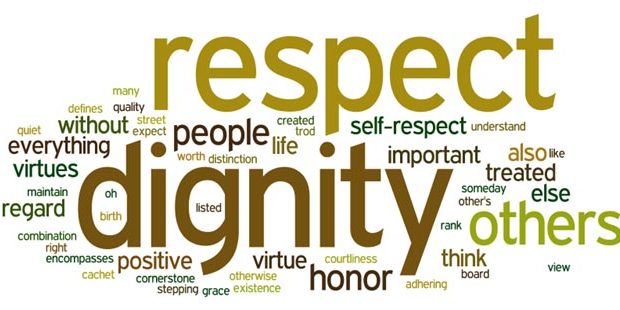
Elicit Language with the CAAP Strategy
Use research-supported strategies such as CAAP as you talk, read, explore, and create in order to build language and elicit it from AAC learners. Two quick tips:
- Providing adequate pause time is essential for this strategy to be effective.
- Some AAC learners need a bit of experience with the strategy before it becomes effective, particularly if they have had a lot of history with therapy or education that used more of a confrontational approach. Those learners may appear passive at first because they are so used to being told what to say/do. Keep at it and build new habits of non-obligatory styles of interaction.
Teach Content Words
Resist falling into the trap of thinking that core words are everything. While important, they are best viewed as the building blocks for further language development and self-expression. This is a great opportunity to go beyond core vocabulary and teach content words that are useful in a variety of situations, such as justice, fair, protest, discriminate, and support. “But shouldn’t I wait until he’s mastered his core words?” Probably not. (More on that here) Rather than waiting, use a solid and predictable plan for new word instruction to give the AAC learners the chance to acquire more sophisticated vocabulary.
Use a Content-rich App
Build background knowledge with apps and websites that are rich in content. Brainpop and Brainpop Jr are some of our favorites for this because they are engaging, age-respectful, and offer multiple avenues for learning about the content. For example, this one on civil rights, includes an informational video, games, and worksheet-type activities.
However you decide to do it, keep the conversation going. Decades after his death, Dr. King still has much to teach us.
Filed under: Featured Posts, PrAACtical Thinking
Tagged With: holiday, language therapy
This post was written by Carole Zangari

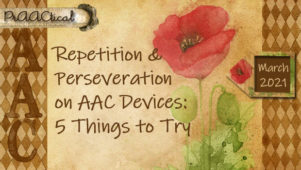
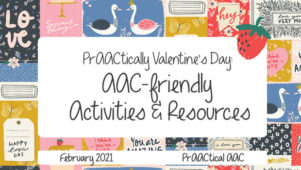
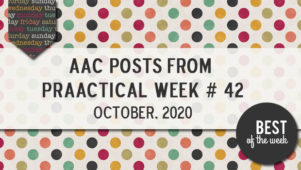
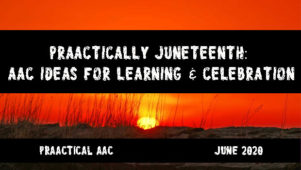
1 Comment
Thank you so much for doing this important content. I hope that you will continue doing articles like this one.